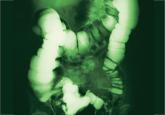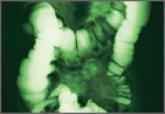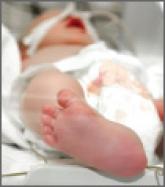Medical Verdicts


VERDICT A $526,088 verdict was returned.
Was CP a result of poor communication?
The on-call ObGyn was notified that a woman was about to deliver at the hospital. The attending resident monitored labor and delivery until the ObGyn arrived. A cesarean delivery was performed. The child suffered hypoxic ischemic encephalopathy with brain damage and cerebral palsy.
PARENTS’ CLAIM A delay in performing cesarean delivery caused the child’s injuries. The ObGyn, who was not present during labor, failed to properly instruct the resident.
DEFENDANTS’ DEFENSE The ObGyn claimed the resident’s interpretation of the fetal monitoring strips misled her to believe that there was no emergency. Cesarean delivery was immediately performed upon the ObGyn’s arrival.
VERDICT The hospital and resident settled for an undisclosed amount before trial. An Ohio defense verdict was returned for the ObGyn.
Was excessive electrocautery used?
A 52-year-old woman underwent supracervical hysterectomy with bilateral salpingo-oophorectomy. She developed a vaginal-peritoneal fistula and a chronic abscess with pain; additional operations were required.
PATIENT’S CLAIM The ObGyn used excessive electrocauterization during the first operation, leading to fistula development. An adhesive barrier prevented fistula healing. The patient would not have had her ovaries removed had she known the consequences, including hot flashes and painful sexual intercourse.
PHYSICIAN’S DEFENSE Surgery was properly performed; excessive electrocautery was not used. The adhesive barrier was correctly applied and did not cause injury. Fistula development is a known complication of the procedure. Appropriate consent was obtained.
VERDICT An Illinois defense verdict was returned.
Why did child have brain damage?
At 25 weeks’ gestation, a mother was found to have genital herpes and received medication. Gestational diabetes was diagnosed at 29 weeks’ gestation and treated with diet. At 38 weeks’ gestation, the patient came to her prenatal visit with scabies on her abdomen, hands, and feet; a scabicide was prescribed. The resident in charge of her care planned to induce labor between 39 and 40 weeks’ gestation.
Meconium was present when the membranes were broken. When fetal heart-rate monitors showed nonreassuring heart tones, an emergency cesarean delivery was performed.
The baby required resuscitation due to a low heart rate. She experienced a seizure at 4 hours of life. Head imaging was consistent with a herpes infection or an hypoxic ischemic event. The child has cerebral palsy with speech and motor deficits.
PATIENT’S CLAIM The resident failed to respond to signs of fetal distress and call in the attending physician. Cesarean delivery should have been performed earlier.
DEFENDANTS’ DEFENSE The baby recovered well after being slightly depressed at birth; umbilical cord blood gases were in the normal range. There was no hypoxic ischemic event during labor. The baby’s injuries were due to infection.
VERDICT A New York defense verdict was returned.
Diaphragmatic hernia missed on fetal US
At 19 weeks’ gestation, a 25-year-old woman underwent fetal ultrasonography at a radiology clinic. The radiologist’s report indicated that the standard fetal structural survey was “unremarkable.” When the child was born, catastrophic impairment and deformity were present due to a diaphragmatic hernia.
PARENTS’ CLAIM The parents claimed wrongful birth. The radiologist missed a diaphragmatic hernia that was evident on the ultrasound.
DEFENDANTS’ DEFENSE The case was settled before trial.
VERDICT A $333,664 net Florida settlement was reached after deduction of attorney’s fees.
Was breast cancer missed on screening mammogram?
Screening mammography conducted in July 2009 was reported by a radiologist as being unchanged when compared to studies from the previous 2 years. Several months later, the patient discovered a lump in her right breast that was diagnosed as cancer. She underwent a lumpectomy in July 2010, followed by chemotherapy. The patient’s cancer metastasized and she developed lymphedema.
PATIENT’S CLAIM The 2009 mammography showed an abnormality in the right breast that was not present on earlier films. Further testing and treatment in 2009 would have prevented metastasis.
PHYSICIAN’S DEFENSE There was no negligence; the 2009 mammogram was properly read. Treatment and outcome would have been the same regardless of the timing of diagnosis.
VERDICT A $140,919 Michigan verdict was returned.
Premature twin has CP
Born at 26 weeks’ gestation, one twin was in critical condition. She was taken to the pediatric intensive care unit, where she remained for 46 days, and was then transferred to a long-term care center. She suffers from cerebral palsy.





